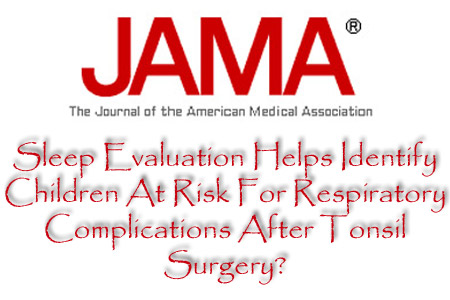
Pediatric adenotonsillectomy is known as a safe surgical removal of the tonsils and adenoids. It now seems that sleep evaluation termed as polysomnography prior to pediatric adenotonsillectomy is helpful in the health terrain. A latest study suggests that polysomnography before pediatric adenotonsillectomy aids in detecting children at a higher risk of developing postoperative respiratory complications.
While conducting the study, investigators thoroughly assessed the records of 1,131 children subjected to an adenotonsillectomy. A total of 151 patients forming 13.4 percent of those going through adenotonsillectomy underwent preoperative polysomnography. On completion of the surgical procedure, 23 patients representing 15.2 percent reported adverse respiratory events after surgery. As per the results of polysomnography, patients facing respiratory complications had extremely higher apnea-hypopnea index, greater hypopnea index and lower nadir oxygen saturation.
Investigators share, “Polysomnographic data may potentially be used for predicting which patients are at higher risk for adverse respiratory events after adenotonsillectomy. Such knowledge is valuable in planning postoperative management and perhaps intraoperative anesthesia management.”
While higher apnea-hypopnea index may offer an overall severity of sleep apnea like sleep disruptions or low levels of oxygen in the blood and greater hypopnea index provides episodes of overly shallow breathing or abnormally low respiratory rates, lower nadir oxygen saturation is the lowest level of oxygen saturation. Eric M. Jaryszak, M.D., of the George Washington University School of Medicine, Washington, D.C., and colleagues noted that 23 participants with complications have a higher BMI than those without the complications. On the basis of the BMI criteria, 47.8 percent were defined as obese from the complication group and 29.7 percent in the non-complication subgroup.
The study is published in the January issue of Archives of Otolaryngology—Head and Neck Surgery, one of the JAMA/Archives journals.
